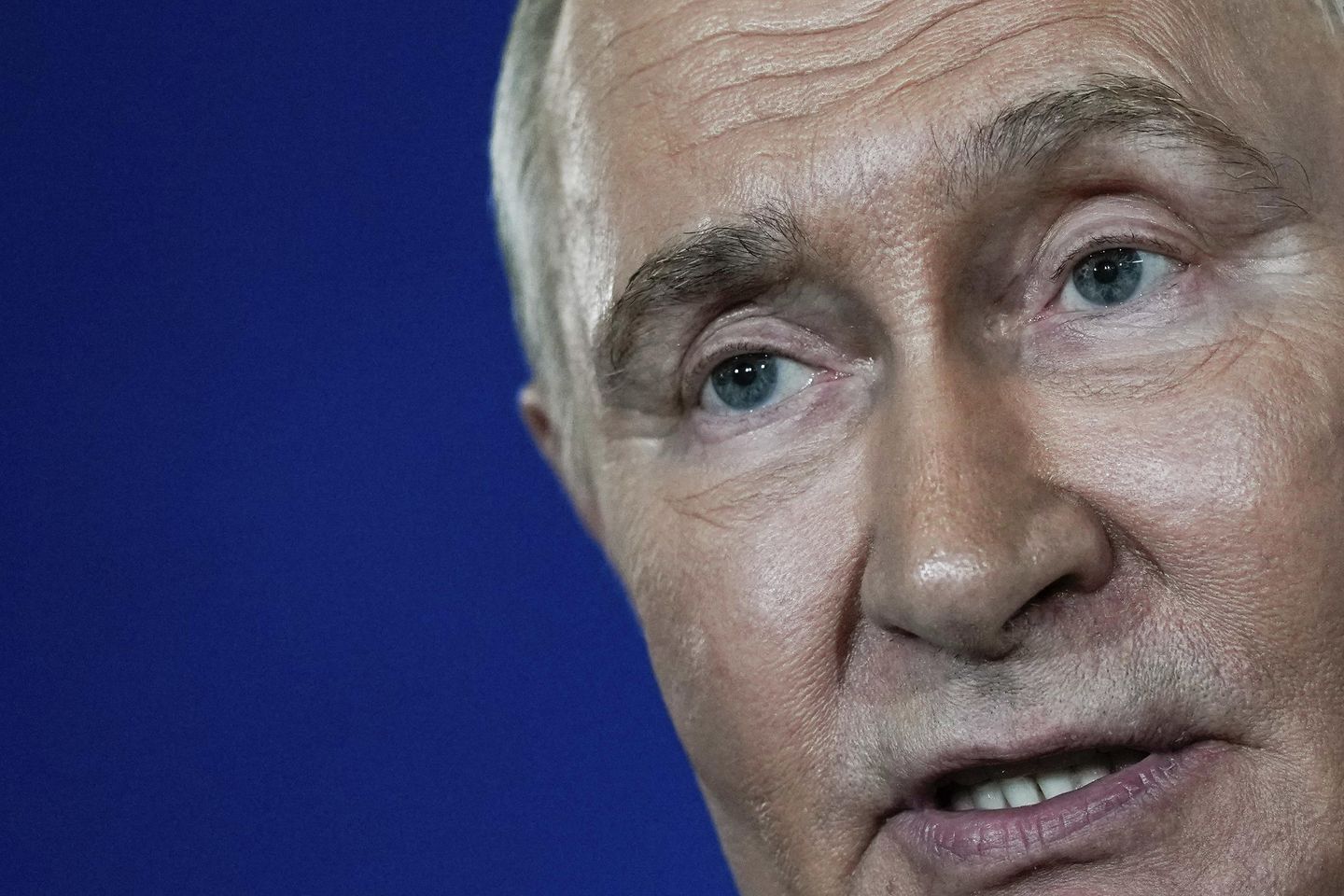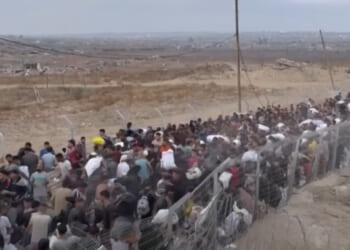
The ugly truth behind any deal that would cede a chunk of Ukraine’s Donbas region to Moscow is that it could immediately strengthen the Russian military, providing a major win for one of America’s leading adversaries in an era of great power competition.
In such a scenario, Ukraine would lose some of its most heavily fortified defensive positions. Russian President Vladimir Putin’s generals would seek to deepen their substantial footprint in the strategically vital theater with new military bases. The Russian navy could gain even greater control over the Black Sea. The Russian government and its armed forces could take de facto ownership of the significant mineral deposits underground in eastern Ukraine.
The U.S., Ukraine and Europe likely will insist on a sizable buffer zone designed to prevent Russia from turning the Donetsk and Luhansk oblasts, which collectively make up the Donbas, into a military hub that could threaten Kyiv and other former Soviet nations in Eastern Europe. It’s unclear how that scenario could be prevented, short of a permanent multinational contingent of ground troops stationed in the region willing to fight the Russian army if necessary.
NATO officials, including Gen. Dan Caine, chairman of the Joint Chiefs of Staff, met Wednesday to discuss such a plan and held a “candid discussion,” a senior alliance official told The Associated Press.
Alliance members, including the U.S., have given few, if any, indications that they are truly willing to engage in all-out war against the Russians if, as many battlefield analysts fear, the Kremlin inevitably breaks whatever agreement is made to end the current conflict.
Questions are swirling around President Trump’s push to end the war, including exactly what the U.S. military commitment would be to the still-undetermined “security guarantees” the West says it is willing to provide to Ukraine. Specialists say one thing is certain: Russia would immediately use any new territory to expand its military reach.
SEE ALSO: Uneasy Poland fortifying borders, buying weapons as Russia gains momentum in neighboring Ukraine
“Russia will redeploy permanent Russian forces to new bases in Ukraine and militarize their holdings,” said George Barros, the Russia team and geospatial intelligence team lead at the Institute for the Study of War, who has been closely tracking the war since its outset in February 2022.
“Russia now occupies about 20% of Ukraine and will use it to seize even more when they try this again,” Mr. Barros told The Washington Times.
He said Russian forces are unlikely to take control of heavily fortified Ukrainian cities in Donetsk, such as Slovyansk and Kramatorsk, unless those cities are effectively given to the Russians as part of a peace deal.
“The Ukrainians have turned these cities into massive fortified positions that they use to hold down the eastern front,” Mr. Barros said. “No such fortified cities exist to their west in Kharkiv or Dnipro oblasts. To lose these strong points would be a blunder and greatly complicate Ukraine’s ability to defend the rest of eastern and central Ukraine.”
Russia has indicated its intentions in the Donetsk oblast, which is already occupied mainly by Russian troops. The Kyiv Independent reported Wednesday that Russian troops are turning the Donetsk International Airport into a military hub.
Specifically, satellite images appear to show the Russian military repaving old landing strips and erecting new buildings across the facility to create what could be launchpads for its ever-growing fleet of attack drones.
SEE ALSO: Ukraine watches Washington for concrete security pledges as fears of concessions linger
In Crimea, which Russian forces seized in 2014, and elsewhere along the Azov Sea coast, Russian troops are reportedly turning old vacation resort facilities into new military barracks.
A detailed map compiled by the Georgian Foundation for Strategic and International Studies shows massive deployments of Russian forces across its western front. It’s easy to imagine a scenario in which many of those troops set up permanent bases in Donetsk, should they gain that territory in any U.S.-backed peace agreement.
The result would be a Russian military with more bases, forward-deployed assets and regional reach than before the war began.
NATO-backed buffer zone?
NATO and its member nations aren’t losing sight of the prospect of a Russian military with permanent capabilities stretching deeper into Eastern Europe. The alliance’s 32 defense chiefs held a video conference Wednesday to discuss the kinds of security guarantees the West could offer Ukraine.
Mr. Trump has ruled out putting American troops on the ground in eastern Ukraine. Still, he has seemingly left open the door to air assets or other military capabilities as part of a broader coalition led by Europe.
European nations appear willing to put ground troops in eastern Ukraine, though the details of such a plan remain murky at best.
After his Monday meeting with Mr. Trump at the White House, Ukrainian President Volodymyr Zelenskyy reiterated Wednesday that his nation needs such promises.
“We need strong security guarantees to ensure a truly secure and lasting peace,” Mr. Zelenskyy said.
If he signs off on a deal giving parts of the Donbas to Russia, a concession he is deeply reluctant to make, Mr. Zelenskyy and his generals would likely want a buffer zone in the Donbas.
Former Pentagon officials say they would likely insist on a specific stretch of land that could not host Russian forces, per the agreement.
“If they were to do that, what they would have to do is negotiate not having Russian troops in the area. There can’t be any Russian troops within 1,000 kilometers, for example. But that kind of security guarantee is very fragile because it can change very fast,” said Jim Townsend, deputy assistant secretary of defense for European and NATO policy during the Obama administration.
“It’s something where it’s not just a land swap where you give a little bit here or a little bit there,” said Mr. Townsend, now a senior fellow at the Center for a New American Security. “It’s a big, strategic chunk they’re giving up, and it’s something that the Ukrainian military is really fighting against.”
Mr. Townsend and other analysts stressed that a strong military presence from a “coalition of the willing” led by NATO’s European member states would be crucial to keep the Russians from turning Donetsk or the entire Donbas into a military launchpad for attacks on Europe.
A key question now is whether such a deployment, should it materialize, would have an end date or whether participating countries would essentially be signing up for an indefinite military deployment into one of the world’s most hotly contested swaths of land.
In the meantime, Russia is ramping up military operations in the region. On Tuesday, just hours after Mr. Zelenskyy and other European leaders met with Mr. Trump, Russian state-run media said Russian drones struck an oil refinery in the Donbas that supplies fuel to the Ukrainian army.















